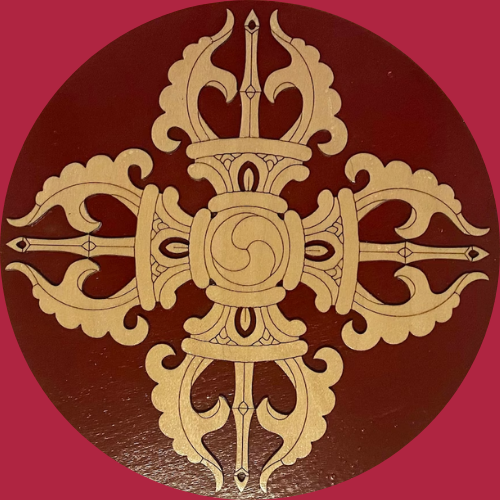ཨུ་རྒྱན་
The Life of Tilopa and Oḍḍiyāna
A dakini in the form of a young lady giving gifts and advising Tilopa to explore the land of Uddiyana in an attempt to get secret tantric teachings. Tilopa shares the advice provided with his parents. His parents recall many past predictions from Dakinis that went well for Tilopa. He left for Oḍḍiyāna with gifts that he received.
The life of Tilopa was written in a language which seems difficult for the translators and writers as it is obviously a great task for contemporary modern Tibetans to comprehend.

Uddiyana is considered as a Buddha realm or field where only fortunate people can visit. In fact, there are almost five holy places like this, known as “The Five Vajrayana / Tantrayana Sources,” region where Vajrayana teachings got preserved and were taught. The mystical land lies somewhere on what was once known to many scholars as Gandhara/ Gandharva, in some significant texts, and now presently comprises frontier regions of Pakistan and Afghanistan.
A 5 CE. Hephthalite coin was found which shows the reign of King Lakhana “aditya” of Udyana/ Oḍḍiyāna. Scholars of China and India have visited Uddiyana for exploring Tantrayana. Tibetan texts elaborates that Oddiyana was a kingdom that lies at the northwest of the Indian subcontinent, presently consisting north of Peshawar, exactly in Swat Valley. Record of Hiuen Tsang suggests that the region probably covered south of Hindu-Kush, extending from Indus to Chitral.
Uddiyana was the mediator for injecting Persian concepts into Bön, while transmitting Kashmir Shaiva-teachings in Tibetan Buddhism, and combined early Mahayana of India with Tantric teachings and aspects of folk religion, a mixture that shaped Vajrayana in Tibet.
Vivien de St. Martin’s map (Pelerins Bouddhistes, II.) represents Oḍḍiyāna. Fahian called this region as the most northernly Province of India where food and clothing is much similar with Gangetic plains of India, native country of Padma Sambhava, an apostle of Tibetan Buddhism. Serveral Sakya doctrines were already present at Udyana, which was probably with Shaiva culture which provided a classic ground for witchcraft and sorcery.
A Buddhist monk, Tao-lin, left the western region and went towards northern portion of the Indian Subcontinent. He visited Kia-che-mi-louo or Kashmir for pilgrimage, from where he arrived at U-ch’ang-na or The Kingdom of Oḍḍiyāna.
- Sanskrit – उद्यान/Uddiyana / Oddiyana
- Tibetan – ཨུ་རྒྱན་ / u rgyan / o rgyan / Urgyen / Orgyan;
- Chinese – 烏萇
(Ed. Chavannes, I-tsing, p. 105.) H. C.)
